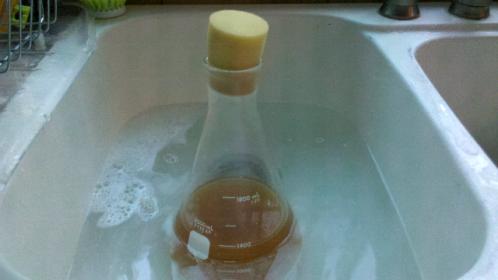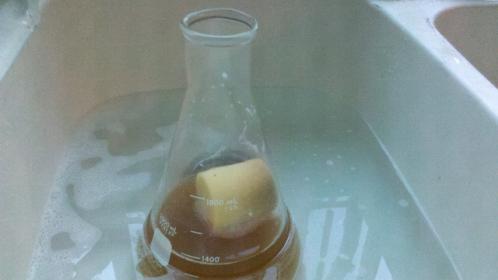bottlebomber
Well-Known Member
I make starters on the stovetop in an erlenmeyer flask like most everyone else. Then, I put the flask in the sink, and start a somewhat annoying process of using the sink gun to spray around on the sides of the flask with progressively cooler water until im satisified that the flask isn't going to crack, then I fill the sink with cold water and let it sit in there till I can pitch.
What im wondering though is has anyone ever tried plunging very hot Pyrex into quit cool water? I really don't want to risk a $30 dollar flask on it, but I do know the stuff is pretty tough. The cookware can go from freezer to oven im pretty sure, but that's not as much a shock as water.
What im wondering though is has anyone ever tried plunging very hot Pyrex into quit cool water? I really don't want to risk a $30 dollar flask on it, but I do know the stuff is pretty tough. The cookware can go from freezer to oven im pretty sure, but that's not as much a shock as water.



















![Craft A Brew - Safale S-04 Dry Yeast - Fermentis - English Ale Dry Yeast - For English and American Ales and Hard Apple Ciders - Ingredients for Home Brewing - Beer Making Supplies - [1 Pack]](https://m.media-amazon.com/images/I/41fVGNh6JfL._SL500_.jpg)









































